This morning we had a miscommunication going on in the Jeep. Had it happened before we left, it probably would have been settled more quickly and less stressfully.
I thought we were going to Charles Towne Landing for awhile and then making a short trip to Folly Beach to look at the ocean.
Blaine thought we were making a quick trip to Charles Towne Landing and then spending the bulk of the day at Folly Beach doing other things besides looking at the ocean.
Since we got another late start, and Charles Towne Landing took longer than we thought, we had to skip the beach. Too bad, because it was sunny and 74 today! Perfect for the beach. Had I realized there were other things to do there, I would have willingly just spent the day there and saved Charles Towne for another day. And because he’s a kind and wonderful husband, he was willing to forfeit his plan for the day. Honestly though, I really thought we’d still make it to the beach!
Charles Towne Landing is actually a State Park. It marks the location where English settlers landed in 1670 and established the birthplace of the Carolinas. (Plymouth Rock was 1620 and Dorchester, Massachusetts was 1630. The Dorchester we were just at was 1696.)

Their parking lot was nothing like we’d ever seen. There was sea grass growing tall in every row. Looked nice!

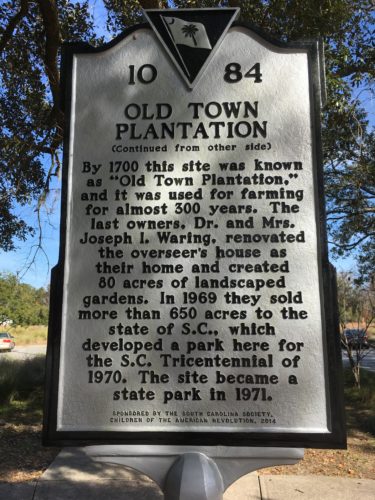
This is one of only a few original settlement sites that still exist in the United States today. They have 6 fireable cannons that they shoot on the first Saturday of every month. That’s not when we were there. Too bad! And there are 6 miles of trails.
When we arrived, there were these kids running crazy in the gift shop. The ranger looked a bit flummoxed and we told her to go ahead and take care of it. Turned out, the moms were sitting right there just letting ’em run around shooting each other with the toy guns in the shop.
They headed out the door, so we decided to visit the museum first. It was much quieter! : )
So come on! Let me take you on a tour! (It was mostly ‘storyboards’)

My how we’ve changed! : )

I took this and the next one because the woodwork here was beautiful!
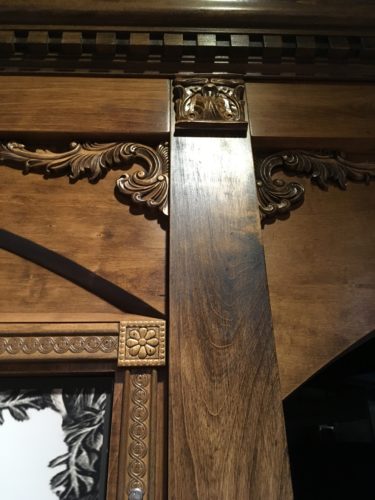



A partial passenger list.
I took this to note the spelling . . .









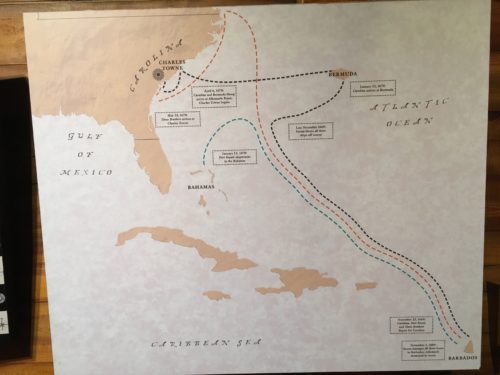
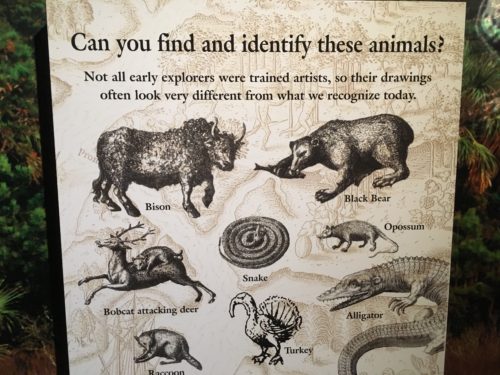
I liked the artistry on this one. : )
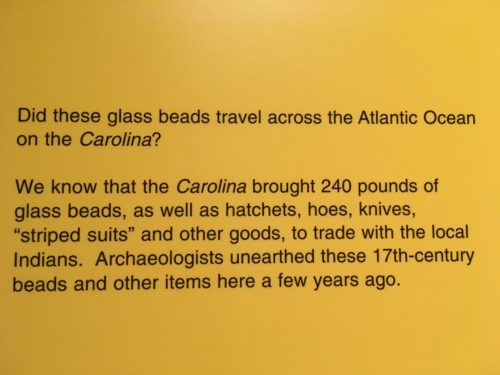

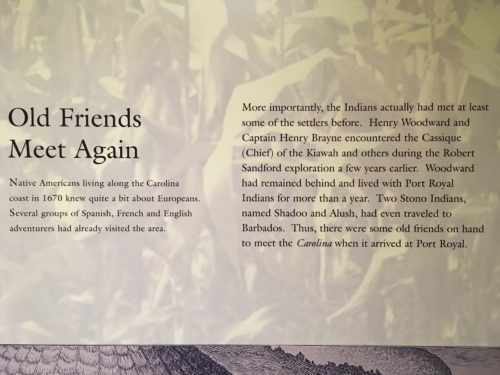








A handmade nail found on site.


Let’s break this up for a minute. How much corn would need to be ground for a family of four every day and how long did it take? Make your guess and catch the answer at the end of our tour.



What a room would have looked like



Cool, huh?
Next up was the zoo.
The zoo houses otters, shore birds, red wolves, a lonely black bear, a puma, “domestic livestock” (a couple of sheep, goats and a pig), skunk (but he was off exhibit), a bobcat, white-tail deer, turkeys and bison.

This bear seemed very lethargic and sad.
Maybe it’s because it’s December and he’s not hibernating??






Still Fall!


But the coolest thing we saw all day was the “Pelican Tree”. We called it that because there were all these pelicans perched in it. Never seen that before! Their webbed feet were curled around the branches just like a ‘regular’ bird!




This was a very interesting place, although at times, I felt very sorry for the zoo animals that were there. They just didn’t seem happy like they do at other zoos.
Time for a quick lunch, and then on to the “History Trail”.

The trail allows you to walk around the original 1670-1680 original settlement that includes a few reconstructions.



Servants quarters

Inside the building

Interesting, don’t you think?


Bad lighting = bad picture : (
It’s the tub.


Reconstruction of the palisade.
It was built in the original holes they unearthed.



There’s also a 1700’s style ship called “Adventure” that you can board and walk around. (It’s situated about halfway around the History Trail.) I don’t know if there’s someone there every day, but when we were there, they had a guy dressed in period clothing to talk to you and answer questions. I really enjoyed listening to him talk to the kids on board.
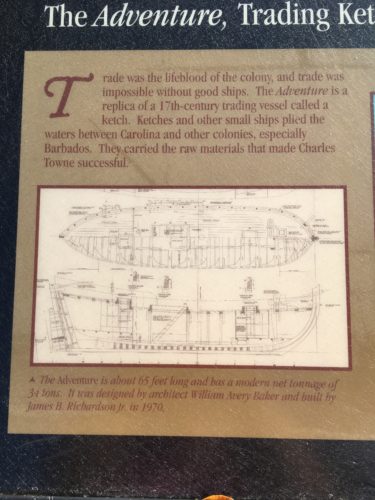



Below deck it’s pretty tight!

This is the captain’s quarters. It’s also where the gunpowder was stored.



Back out and on with our walking tour. . .


Just in case you ever want to write about old sailing ships . . .


This was at a current archaeological site.
The dark stripe shows where a barricade wall once stood. When the wall crumbled and fell in, the residue changed the color of the dirt. The white lines are strings for grid lines.
Interesting!



In the background, you can make out the Legare-Waring House.
Other than it being built in 1840’s, and now being a wedding site “steeped in history”, I couldn’t find any more about it and it’s not open to the public, but you can walk all around the grounds.

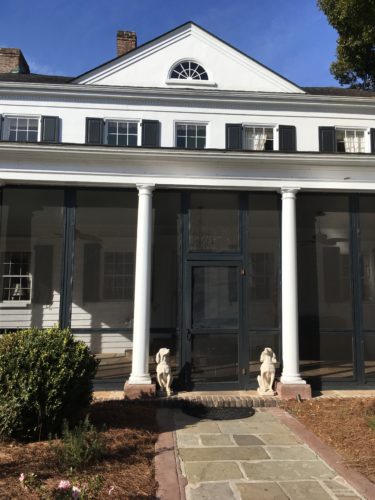







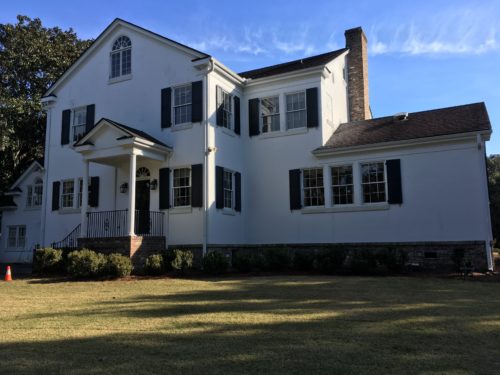

This is the entrance to the house property.
We came in through the back, so this is on our way off the property.

We saw this tree on the way back to the car and thought it was incredible looking. . . .


o Then we saw this plaque.
It really IS incredible!!!!
According to this, this tree is 800 years old!!!
Here’s what I found on how to know the age of a Live Oak if the tree is still living:
A live oak (Quercus virginiana) is the sumo wrestler of the oak world. Its short massive trunk branches widely into mighty branches that seem to rest their elbows on the ground. Picturesque and impressive, live oaks grow up to 80 feet tall, with a branch spread equal to or greater that the height. Many people mistake live oak for evergreens, since they hold their dark, waxy leaves all winter and lose them only as new leaves emerge in the spring. The tree is native to the coastal plains of the East Coast.
Step 1
Mark a spot on the tree about 4 to 5 feet from the ground by leaning a stick up against it. If the tree burls in that area — if it becomes bulbous — find a spot above or below the swell where the tree trunk returns to its normal lines.
Step 2
Measure the circumference of the tree trunk at that spot. Be sure the tape measure runs evenly around the tree and does not lift up on one side or the other, which would give a false reading.
Step 3
Calculate the diameter of the tree. Use your calculator to divide the circumference measurement, expressed in inches, by pi: 3.1416.
Step 4
Use the following formula to figure out the age. The first 10 inches in diameter indicate an age of 76 years. Each inch after that adds six-and-a-half years up to age 154. After that, each inch adds six years.
So now you know. Just in case you ever want to check it out for yourself. : )
